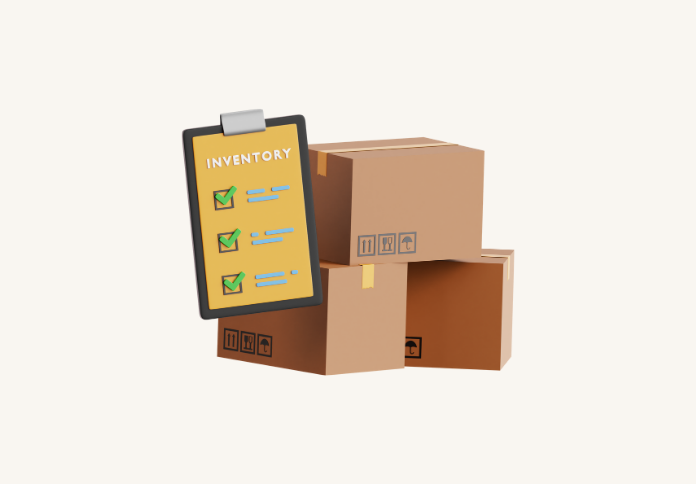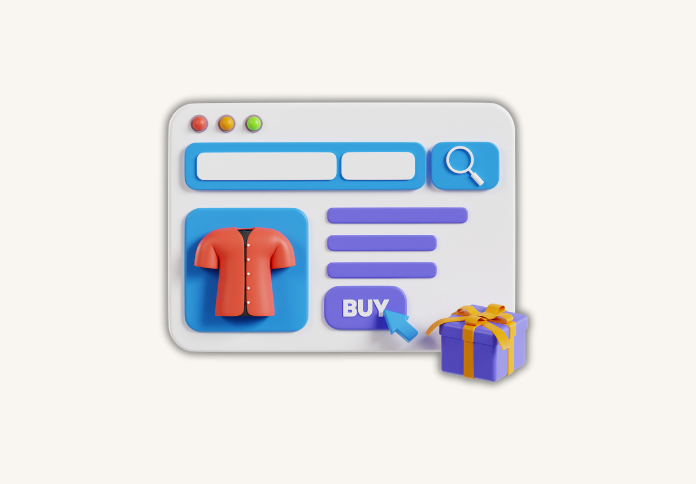
Inventory Management: Strategies for Growth and Profits
Inventory Management: Strategies for Growth and Profits
As a business owner, you know how vital it is to have the right products in stock. Effective inventory control is key to keeping profits up and customers happy.
Poor inventory management can cause stockouts, overstocking, and higher costs. But, managing your inventory well lets you quickly adapt to demand changes. It also cuts costs and boosts efficiency.

Finding the right balance between having enough stock and keeping costs low is essential. With the right strategies, you can achieve this balance and grow your business.
Key Takeaways
- Effective inventory management is crucial for business profitability and customer satisfaction.
- Poor inventory control can lead to stockouts, overstocking, and increased costs.
- A well-managed inventory improves operational efficiency and responsiveness to demand changes.
- Striking a balance between stock availability and inventory costs is key.
- Implementing the right inventory strategies can drive business growth.
The Business Impact of Effective Inventory Management
Companies that get good at inventory control see better profits, less waste, and happier customers. They keep their stock levels just right. This means they don't run out of items or have too much.
Good stock management is key to staying ahead. It's not just about keeping track of what you have. It's about making smart choices that help your business grow.
How Proper Stock Control Drives Profitability
Good stock control helps your bottom line by matching what you have with what customers want. This way, you spend less on holding onto items and avoid having old stock.
The Cost of Poor Inventory Practices
Bad inventory habits can cost a lot. Too much stock wastes money, while not enough means lost sales and unhappy customers.
| Inventory Issue | Consequence | Impact on Business |
|---|---|---|
| Overstocking | Increased holding costs | Reduced profitability |
| Understocking | Lost sales and revenue | Damaged customer trust |
Setting Strategic Inventory Goals for Your Business
To improve inventory management, set goals that match your business's big picture. Look at past data, know the market, and use smart inventory control.
https://www.youtube.com/watch?v=0NOER-Lle-0
Assessing Your Current Inventory Situation
To improve your inventory management, start by checking your current stock and systems. Look closely at your storage and how you track items.
Conducting a Comprehensive Inventory Audit
A detailed inventory audit is key to knowing your stock status. This step involves counting and verifying your items. It also helps find where your current methods might not be working well.
By doing this, you can spot chances to get better at asset tracking and managing your inventory.
Identifying Critical Pain Points and Inefficiencies
When you audit, focus on finding major problems and areas that need work. Common issues include
- inaccurate stock counts
- inefficient storage systems
- poor tracking methods
. Spotting these issues lets you start working on fixes.
Establishing Baseline Metrics for Improvement
Setting baseline metrics is important for tracking progress. You should follow things like inventory turnover, stockout rates, and carrying costs.

Knowing your current state helps you set achievable goals for betterment.
Essential Inventory Management Strategies for Business Growth
To grow your business, you need good inventory management. This means keeping the right amount of stock and cutting costs. It helps make customers happy, boosts profits, and keeps you ahead in the market.
Implementing Just-in-Time (JIT) Inventory Methods
Just-in-Time (JIT) means getting stock just when it's needed. This cuts down on costs and waste. It needs good forecasting and a solid supply chain. With JIT, you can cut inventory costs and keep more cash.
Applying the Economic Order Quantity (EOQ) Model
The EOQ model helps find the best order size to save on costs. It balances the cost of ordering and holding stock. This makes your inventory levels as efficient as possible.

Using ABC Analysis for Stock Prioritization
ABC analysis sorts stock by value and importance. Focusing on 'A' items, which are usually high-value, helps manage key stock well. This reduces the chance of running out or having too much.
Choosing Between FIFO, LIFO, and Other Valuation Methods
Choosing how to value inventory affects your finances and taxes. FIFO and LIFO are common methods, each with its own benefits and drawbacks. Picking the right one for your business can improve your finances and follow accounting rules.
Using these strategies can help your business grow, increase profits, and stay competitive.
Building Effective Stock Control Systems
To manage your inventory well, you need good stock control systems. These systems help you track and manage your stock levels. This way, you always have the right products when you need them.
Setting Up Barcode and RFID Technology
Using barcode and RFID technology can really help your stock control. These tools let you track and monitor your stock in real-time. With barcode scanners or RFID tags, finding products in your warehouse is easy. This cuts down on mistakes and makes your work more efficient.

Implementing Cycle Counting Procedures
Cycle counting is a smart way to manage your inventory. It involves checking a part of your stock often to keep it accurate. This method helps you spot and fix any mistakes quickly. By using cycle counting, you can cut down on full inventory counts. This saves you time and keeps your operations running smoothly.
Establishing Par Levels and Automatic Reorder Points
It's key to set par levels and automatic reorder points for your stock. Par levels show the lowest amount of a product you should have. Automatic reorder points start the restocking process when you're low. This way, you avoid running out of important items and reduce overstocking.
Leveraging Technology: Inventory Management Software Solutions
Effective inventory management in Morocco needs the right tools. Inventory management software can improve inventory tracking and management. It helps streamline operations, cut costs, and boost customer satisfaction.
Selecting Cloud-Based Inventory Systems
Cloud-based inventory systems are flexible and scalable. They let you access your inventory data from anywhere. This is great for businesses with many locations or changing needs.
A recent study found that cloud-based systems can cut inventory costs by up to 20%.
"Cloud-based inventory management systems can reduce inventory costs by up to 20%."
Recent Study
Implementing Mobile Inventory Applications
Mobile inventory apps let you manage stock on the move. They're useful for tracking inventory, counting stock, and managing orders. Using these apps can make your inventory management more efficient.

Integrating with ERP Systems
Connecting your inventory software with ERP systems improves information flow. This integration helps you make better decisions and optimize operations.
Software Options Tailored for Moroccan Businesses
Choosing the right inventory management software is key. Look for a solution that meets your business's specific needs in Morocco. Some software is designed for Moroccan businesses, offering Arabic language support and local tax compliance.
Using these technology solutions can boost your inventory management. It can also help your business grow.
Optimizing Warehouse Management for Maximum Efficiency
Effective warehouse management is key to a successful inventory strategy. It boosts efficiency, cuts costs, and increases profits.
Designing Optimal Warehouse Layouts
A good warehouse layout is essential for smooth operations. It should be planned to cut down travel time and use space well. Use inventory software to plan your layout.

Implementing Smart Storage Solutions
Smart storage solutions make your warehouse more efficient. This includes vertical storage, bin systems, and automated systems. They save space and lower labor costs.
| Storage Solution | Benefits | Implementation Cost |
|---|---|---|
| Vertical Storage Systems | Maximizes storage space, reduces labor costs | High |
| Bin Location System | Improves inventory tracking, reduces search time | Medium |
| AS/RS | Automates storage and retrieval, increases efficiency | Very High |
Training Staff on Efficient Inventory Procedures
Training staff is crucial for a well-organized warehouse. Teach them about inventory software, handling, and counting. Trained staff lowers errors and boosts efficiency.
Focus on these areas to optimize your warehouse. These steps will not only increase profits but also give you an edge in the market.
Supply Chain Integration and Vendor Management
Supply chain integration and vendor management are key to a good inventory management plan. They help make your business more efficient. By improving your supply chain and working well with vendors, you can do better.
Developing Strategic Supplier Relationships
It's important to build strong relationships with your suppliers for stock management. Choose reliable suppliers, talk about good terms, and keep communication open. This way, you get the goods you need on time and in good quality.
Implementing Vendor-Managed Inventory Programs
Vendor-managed inventory (VMI) lets your suppliers handle your stock. This can cut down on costs, improve delivery rates, and ease your work. To make VMI work, work closely with your suppliers and have the right setup.

Navigating Cross-Border Supply Chains in Morocco
Dealing with supply chains across borders in Morocco can be tough. There are customs rules, transport issues, and political factors to deal with. To get through these, know the local market well, build strong supplier ties, and invest in good logistics.
By focusing on supply chain and vendor management, you can make your inventory management better. This helps your business grow and stay profitable.
Mastering Demand Forecasting and Planning
To succeed in the Moroccan market, you must master demand forecasting and planning. This skill lets you predict and prepare for demand changes. It ensures your inventory is always just right.
Applying Statistical Forecasting Methods
Statistical forecasting uses past data to guess future demand. You can use time series analysis and regression analysis to spot trends in sales. These methods help you decide on inventory and production levels.
Accounting for Seasonal Patterns in Moroccan Markets
Moroccan markets see demand changes with holidays and weather. By studying past sales, you can spot busy and slow times. This helps you adjust your stock and production plans.

Converting Historical Data into Actionable Predictions
To turn past data into useful predictions, analyze your sales. Look for trends and patterns. Data analytics tools can help with big datasets. This way, you can accurately predict demand and manage your stock better.
Some steps to make past data useful include:
- Analyze sales data for trends and patterns
- Use data analytics tools for big datasets
- Adjust stock and production based on demand predictions
Mastering demand forecasting and planning boosts your inventory strategy. It improves your business performance.
Inventory Management for Enhanced Profitability
To boost profits, managing inventory well is key for Moroccan businesses. By managing stock levels smartly, companies can cut costs, improve cash flow, and stay competitive.
Strategies to Reduce Carrying Costs and Dead Stock
To up your profit game, cutting carrying costs and dead stock is vital. Try just-in-time (JIT) inventory management. This means ordering stock just when you need it to avoid waste and save on storage.
Also, regular inventory checks can spot slow-moving items. Then, you can clear them out or write them off to avoid losses.
Preventing Costly Stockouts and Lost Sales
Stockouts can hurt your sales and profits. To avoid this, consider a vendor-managed inventory (VMI) system. This lets suppliers handle your stock levels, ensuring you always have enough to sell.
Optimizing Cash Flow Through Strategic Inventory Control
Good inventory management can also boost your cash flow. By keeping stock levels right, you free up money for other business needs. Use inventory optimization software to track demand and adjust your stock.
Understanding Inventory Tax Implications in Morocco
In Morocco, taxes on inventory are important to know. They can help you manage your inventory better and lower your taxes. For example, you might get tax breaks for writing off old stock.
| Inventory Management Strategy | Benefits | Moroccan Business Context |
|---|---|---|
| Just-in-Time (JIT) Inventory | Reduced carrying costs, minimized dead stock | Effective in Morocco's dynamic market |
| Vendor-Managed Inventory (VMI) | Prevents stockouts, improves supply chain efficiency | Beneficial for businesses with reliable suppliers |
| Inventory Optimization Software | Improves cash flow, reduces inventory costs | Useful for businesses with complex inventory needs |
Measuring Success: Key Inventory Performance Indicators
It's vital to measure your inventory management's success for business growth. You need to track key indicators to see how well your inventory is doing.
Calculating and Improving Inventory Turnover Ratio
The inventory turnover ratio shows how often you sell and replace your stock. To find it, divide the cost of goods sold by the average inventory value. A higher ratio means your inventory management is working well.
Monitoring Days Inventory Outstanding (DIO)
DIO tells you how long your stock stays in inventory. A lower DIO is better, as it means your stock turns over faster. To lower DIO, work on your inventory levels and supply chain.
Tracking Fill Rates and Service Level Metrics
Fill rates show how often you can fulfill customer orders from what you have. High fill rates mean you're doing a good job of managing your inventory and making customers happy.
Building Effective Performance Dashboards
To keep track of these metrics, create dashboards that show real-time data. This helps you make smart choices and tweak your inventory strategy when needed.

- Monitor inventory turnover ratio and DIO to optimize inventory levels.
- Track fill rates to improve customer satisfaction.
- Use performance dashboards for real-time inventory tracking.
Overcoming Common Inventory Management Challenges
Businesses face many inventory management challenges that can hurt their profits. Keeping a tight control over inventory is key to staying ahead in the market.
Managing Seasonal Demand Fluctuations
To handle seasonal demand changes, use dynamic inventory planning. This means looking at past sales to guess future demand and adjust stock levels.
Addressing Product Obsolescence
Dealing with outdated products can be lessened by using just-in-time inventory methods. Also, check your inventory often for items that don't sell well.

Preventing Theft and Reducing Shrinkage
To stop theft and shrinkage, add security measures like cameras. Also, do regular checks to find and fix any issues.
Solving Import/Export Challenges
To tackle import/export issues, keep up with customs rules. Also, think about working with experienced logistics companies.
Conclusion: Building a Sustainable Inventory Strategy for Long-Term Success
Creating a lasting inventory strategy is key for your business's success in Morocco. Good stock management and supply chain practices help you meet market needs, cut costs, and boost profits.
By using the tips from this article, you can manage your stock better, make your supply chain smoother, and grow your business. Using technology like inventory software and adopting methods like Just-in-Time (JIT) can really help your operations.
Keep improving your inventory management to match your business goals and market changes. This way, you'll stay ahead and succeed in Morocco's fast-changing business world.
FAQ
What is the primary goal of inventory management?
The main goal of inventory management is to find the right balance. It aims to have enough stock to meet customer needs without wasting money on too much. This way, businesses can stay profitable and run smoothly.
How does effective inventory management impact customer satisfaction?
Good inventory management means products are ready when customers want them. This cuts down on stockouts and lost sales. Happy customers stay loyal, which is great for business.
What are the consequences of poor inventory practices?
Bad inventory management can cause many problems. It leads to high costs, stockouts, and too much stock. These issues hurt profits, make customers unhappy, and slow down operations.
What is Just-in-Time (JIT) inventory management, and how does it work?
Just-in-Time (JIT) means getting inventory just when it's needed. It cuts down on storage needs and waste. This approach helps save money and improve cash flow.
How can businesses assess their current inventory situation?
Companies can check their inventory by doing a full audit. They should look for ways to get better and set goals to track progress. This helps them see how they're doing.
What is the Economic Order Quantity (EOQ) model, and how is it used?
The Economic Order Quantity (EOQ) model helps find the best order size. It aims to lower total costs by balancing ordering and holding expenses. This helps manage inventory levels well.
How can technology improve inventory management?
Technology, like inventory software and scanners, makes managing inventory better. It boosts accuracy, cuts down on mistakes, and gives real-time updates. This helps keep track of stock levels and movements.
What are the benefits of implementing a vendor-managed inventory (VMI) program?
A vendor-managed inventory (VMI) program can save money and improve stock levels. It lets vendors handle inventory, making the supply chain more efficient.
How can businesses optimize their warehouse management?
To improve warehouse management, design efficient layouts and use smart storage. Train staff well to work efficiently. This reduces costs and boosts productivity.
What are some common inventory management challenges, and how can they be overcome?
Managing seasonal demand, dealing with old stock, and preventing theft are big challenges. Use good strategies, technology, and optimize supply chains to tackle these issues.
How can businesses measure the success of their inventory management efforts?
Track important metrics like inventory turnover and fill rates to see how well you're doing. Use dashboards to monitor and analyze inventory performance.
What is the role of demand forecasting in inventory management?
Demand forecasting is key for inventory management. It helps predict demand and adjust inventory levels. This reduces stockouts and overstocking, and improves cash flow.
How can businesses reduce carrying costs and dead stock?
Use strategies like JIT and EOQ to cut carrying costs and dead stock. Regularly check and adjust inventory levels to match demand. This keeps inventory fresh and relevant.





